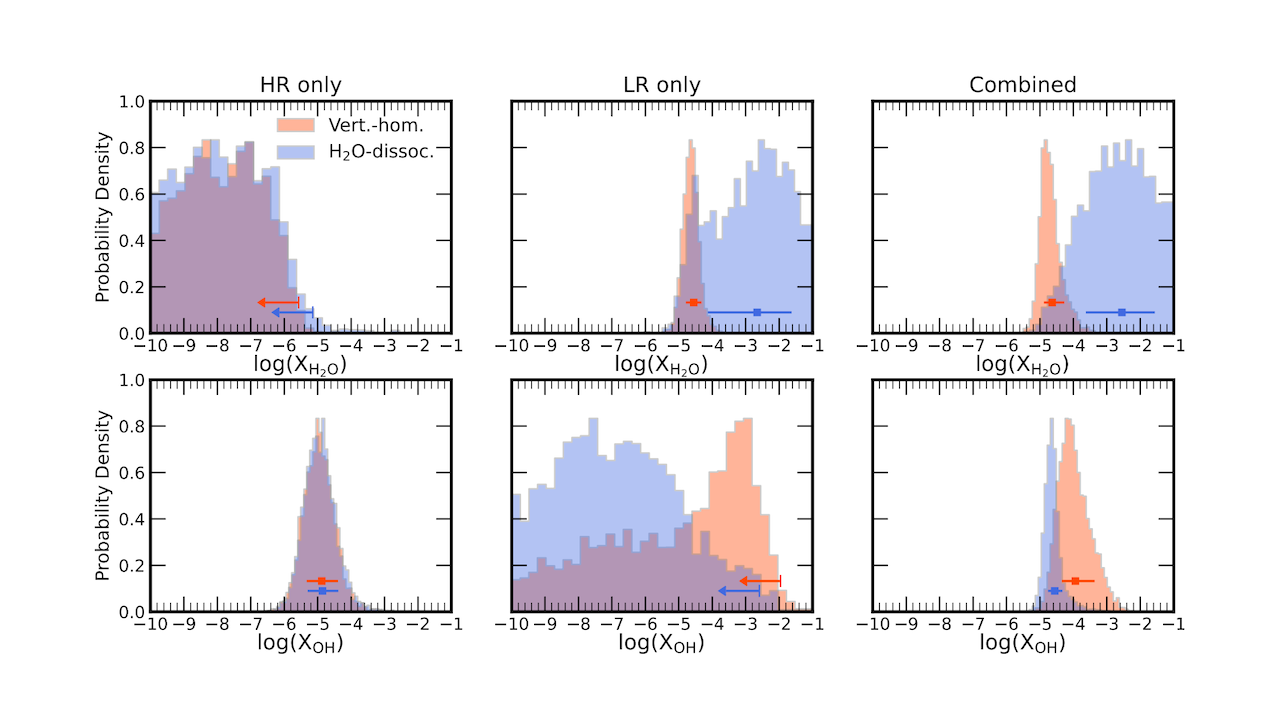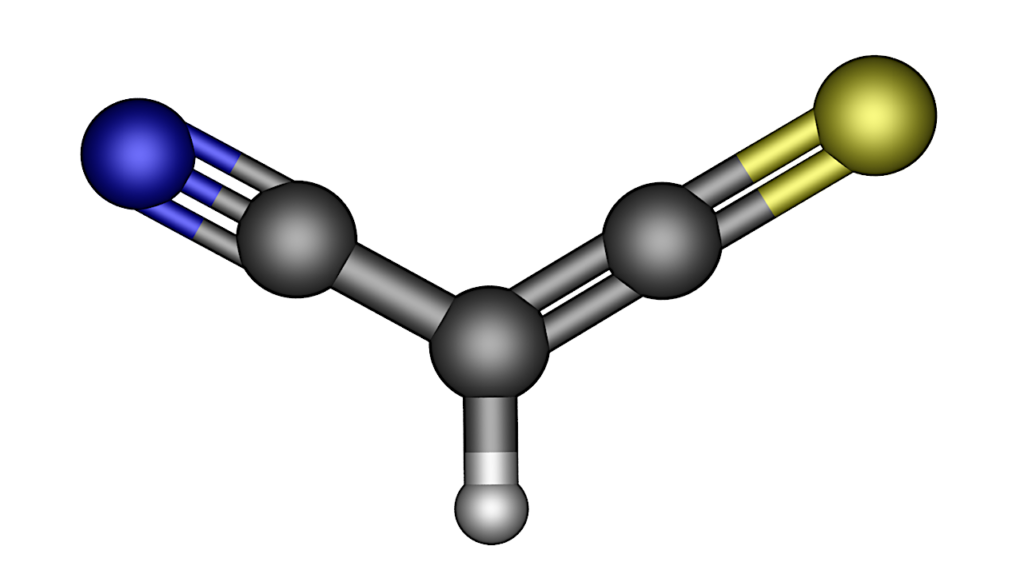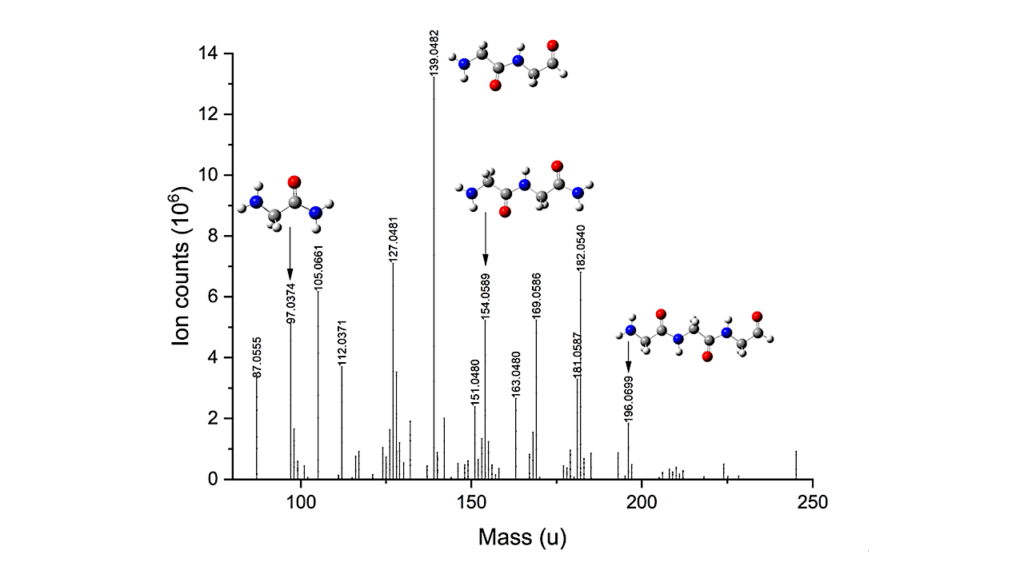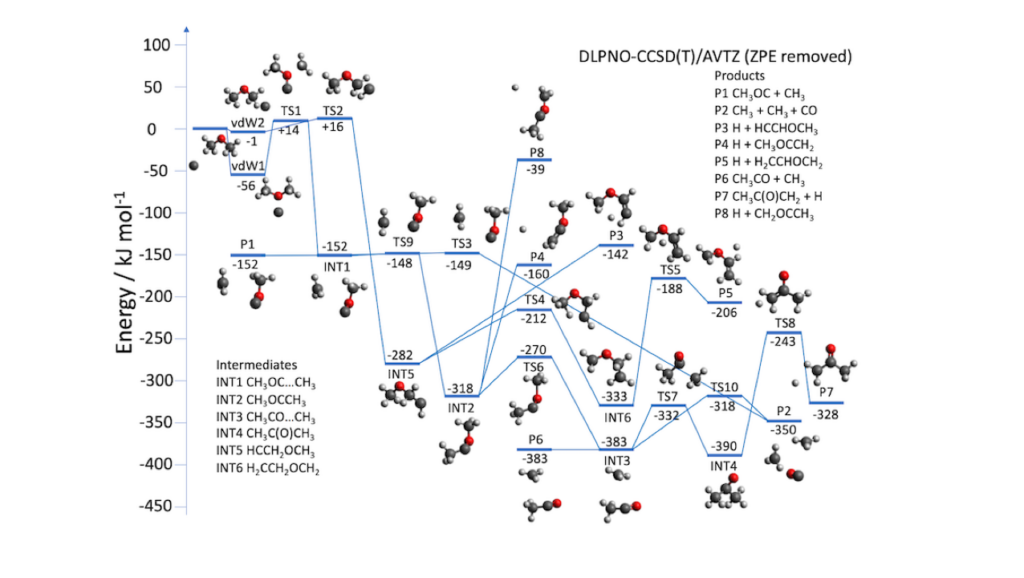Revealing H2O Dissociation In WASP-76~b Through Combined High- and Low-resolution Transmission Spectroscopy

Numerous chemical constraints have been possible for exoplanetary atmospheres thanks to high-resolution spectroscopy (HRS) from ground-based facilities as well as low-resolution spectroscopy (LRS) from space.
These two techniques have complementary strengths, and hence combined HRS and LRS analyses have the potential for more accurate abundance constraints and increased sensitivity to trace species.
In this work we retrieve the atmosphere of the ultra-hot Jupiter WASP-76~b, using high-resolution CARMENES/CAHA and low-resolution HST WFC3 and Spitzer observations of the primary eclipse. As such hot planets are expected to have a substantial fraction of H2O dissociated, we conduct retrievals including both H2O and OH. We explore two retrieval models, one with self-consistent treatment of H2O dissociation and another where H2O and OH are vertically-homogeneous.
Both models constrain H2O and OH, with H2O primarily detected by LRS and OH through HRS, highlighting the strengths of each technique and demonstrating the need for combined retrievals to fully constrain chemical compositions. We see only a slight preference for the H2O-dissociation model given that the photospheric constraints for both are very similar, indicating log(OH/H2O)=0.7+0.3−0.3 at 1.5~mbar, showing that the majority of the H2O in the photosphere is dissociated.
However, the bulk O/H and C/O ratios inferred from the models differs significantly, and highlights the challenge of constraining bulk compositions from photospheric abundances with strong vertical chemical gradients. Further observations with JWST and ground-based facilities may help shed more light on these processes.
Siddharth Gandhi, Rico Landman, Ignas Snellen, Luis Welbanks, Nikku Madhusudhan, Matteo Brogi
Comments: 11 pages, 6 figures, 2 tables, accepted for publication in MNRAS
Subjects: Earth and Planetary Astrophysics (astro-ph.EP)
Cite as: arXiv:2405.01933 [astro-ph.EP] (or arXiv:2405.01933v1 [astro-ph.EP] for this version)
Submission history
From: Siddharth Gandhi
[v1] Fri, 3 May 2024 08:51:33 UTC (1,635 KB)
https://arxiv.org/abs/2405.01933
Astrobiology,








